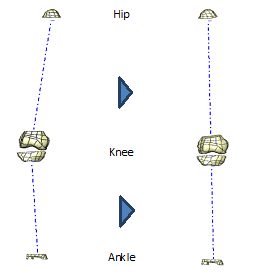Neutral mechanical alignment: reliable and reproducible
Early implant failures only occur in 1-2% of cases, but when they do the impact on the patient is significant. Restoration of a neutral mechanical axis within ±3° has been shown to be an important factor in long-term survivorship.1 In addition, proper alignment has been linked to higher long-term survivorship and is strongly associated with greater stability, a lower rate of loosening, and higher clinical scores.2Studies have shown that varus tibial malalignment (<90°) was associated with a 10.6x greater risk of failure, while >8° valgus femoral malalignment was associated with a 5.1x greater risk of failure. Conversely, knees with neutral alignment of the femoral and tibial components had a 0.2% failure rate.2
Reliable, reproducible alignment
 Patient-specific instruments have long held the promise of helping to achieve a more precise alignment. While studies have demonstrated close to neutral alignment on average, there has also been a varying number of outliers (>3°)found within specific brands.3,4,5,6
Patient-specific instruments have long held the promise of helping to achieve a more precise alignment. While studies have demonstrated close to neutral alignment on average, there has also been a varying number of outliers (>3°)found within specific brands.3,4,5,6
In a study of 63 patients undergoing TKA with the Conformis iTotal, intraoperative computer navigation was used to confirm mechanical alignment. All patients were within ±2° of neutral alignment, and 84.1% of patients were at 0°. Additionally, no patients had extension deficits as measured with navigation post-operatively. 7
Mechanical alignment is a core design principle of the Conformis implant, using anatomic landmarks (center of hip, femur, tibia, and ankle) to set alignment.
By designing customized femoral and tibial components, and a complete set of patient-specific instruments the pre-navigated mechanical alignment is reliably achieved on a consistent basis.
1. Ritter, et al; Postoperative alignment of TKA. It’s affect on survival. Clinical Orthopaedics and Related Research; 1994, 299: 153
2. Ritter, et al; The Effect of Alignment and BMI on Failure of Total Knee Replacement. Journal of Bone and Joint Surgery; 2011, 93: 1588-1596
3. Ng, et al; Improved accuracy of alignment with patient specific positioning guides compared with manual instrumentation in TKA. Clinical Orthopaedics and Related Research; 2012, 470: 99
4. Nunley, et al; Are patient-specific cutting blocks cost effective for total knee arthroplasty? Clinical Orthopaedics and Related Research; 2012, 470: 889
5. Nunley, et al; Do patient-specific guides improve coronal alignment in total knee arthroplasty? Clinical Orthopaedics and Related Research; 2012, 470: 895
6. Lustig, et al; Unsatisfactory Accuracy as Determined by Computer Navigation of VISIONAIRE Patient-Specific Instrumentation for Total Knee Arthroplasty; Journal of Arthroplasty; 2013, 28: 469-473
7. DLevengood, GA; Mechanical Alignment of a Customzied TKA Implant System as Determined by Intraoperative Computer Navigation. BASK Annual Meeting 2014

